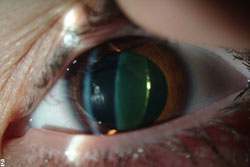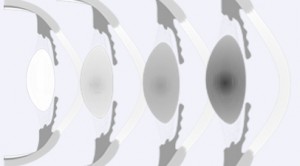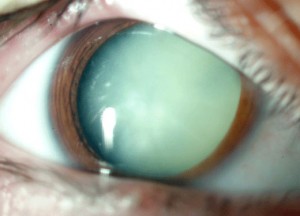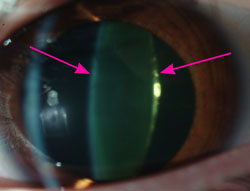Cataracts usually develop secondary to aging. In addition, they may infrequently develop in relation to a variety of insults and risk factors, the common factor being a continuous injury to the
metabolism of the human lens. While there are a number of factors that may lead to cataract, as previously noted, by far the most common reason is simply ‘age’ (which is known as “age dependent cataract”) which normally matures (becomes ready for cataract surgery) around the age of 65-70.When cataract appears at birth or at a very young age the reason of its formation in most cases is genetic, a condition which passed on from one generate on to the next in certain families. However, because of “skipped generations” and various “penetration”, even genetic cataracts don’t imply that one of the parents necessarily had a cataract at a young age. In such early onset cataracts, provided that the cataract reduces the vision significantly, we strive to operate on the cataract once it is diagnosed in order to provide the newborn with the possibility of developing normal vision. Other reasons which might cause cause cataracts at a younger age include rare hereditary diseases that result in inadequate metabolism, interfering with nutrient supply to the natural lens.
Severe injuries to the eye (such as car accidents, penetrating injuries and other severe trauma) may cause damage to the lens, and consequently accelerate the formation of a cataract.
Risk factors involved in the development of cataract
The most common risk factor underlying the development of a cataract, as mentioned above, is ‘age’. Other factors include:
- Family history of cataract present at a relatively young age.
- Systemic diseases and conditions, such as diabetes.
- Eye Injuries.
- Medications, such as high doses of steroids, taken for extended periods of time.
- Exposure to strong sunlight, throughout a period of many many years, with no protection (such as sunglasses) may slightly accelerate the progression of a cataract, and hence result in its formation a few years earlier than would otherwise occur.




